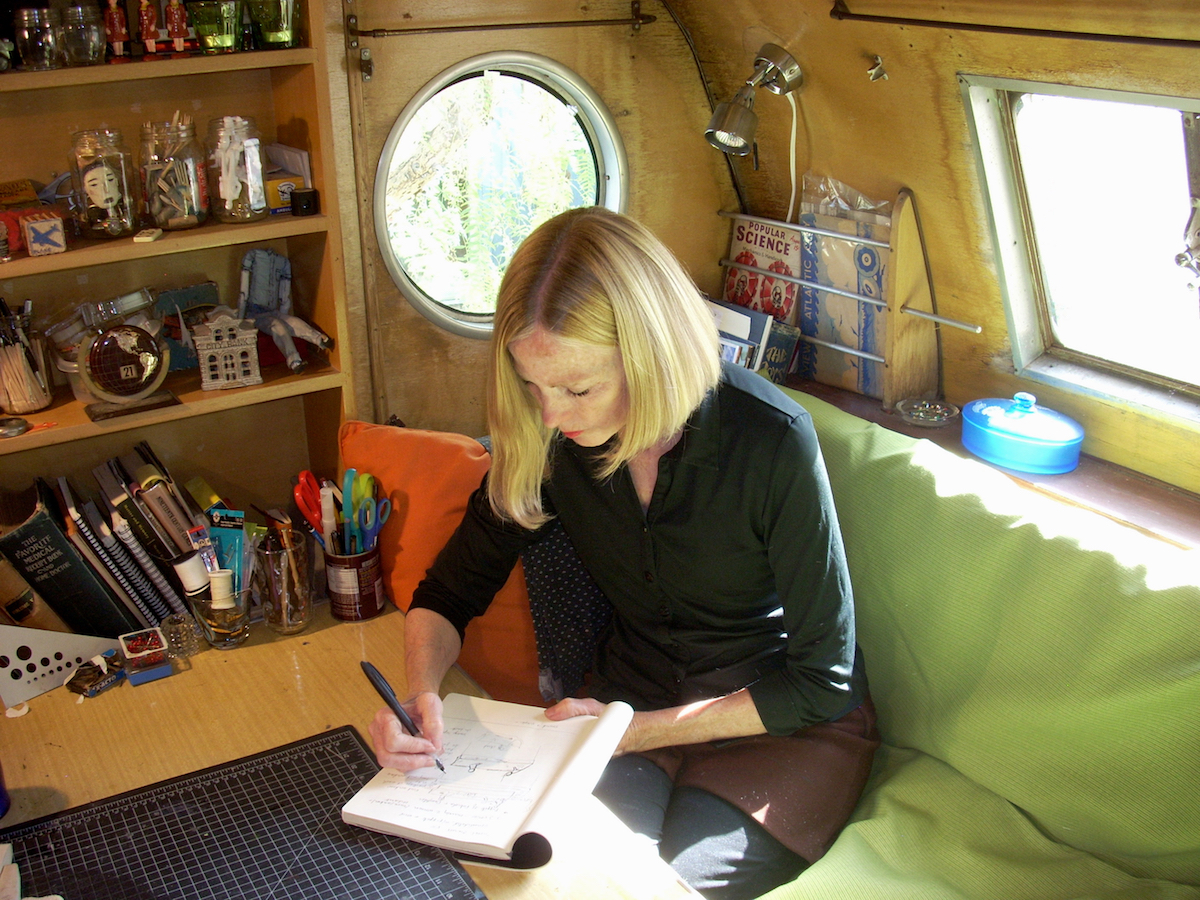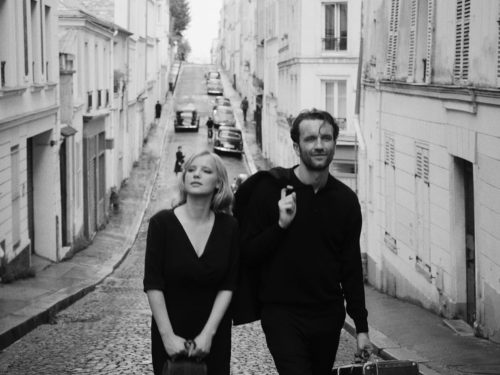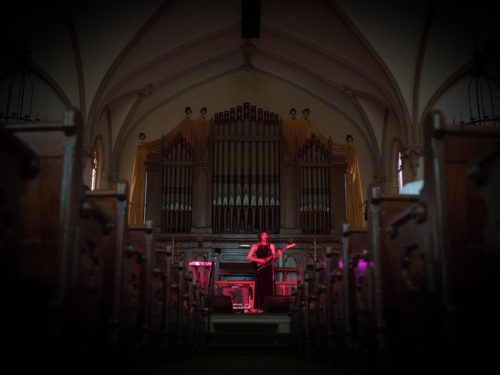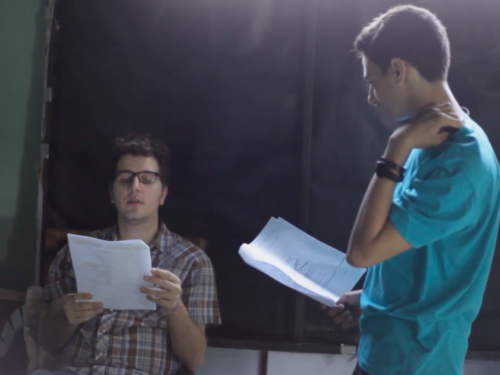The avant-garde filmmaker discusses the origins of her famous ‘Nervous Films’ and the inspiration that came from shattering a laptop
Janie Geiser is a multimedia artist who, besides working in puppet theater, performance and installation art, is renowned for her work in experimental film. Born in Baton Rouge, Louisiana, Geiser currently lives in Los Angeles, where she is a professor in the School of Theater at the California Institute of the Arts. Her films combine found objects, media, and sound and have been screened at some of the most prestigious festivals in the world, including the New York Film Festival, Toronto International Film Festival, and the London International Film Festival. Her film The Red Book (1994) is part of the National Film Registry of the Library of Congress, and The Fourth Watch (2000) was selected for preservation by the Academy of Motion Pictures Archive.
We caught up with Geiser to discuss the origins of the “Nervous Films,” searching for the power and life in ordinary objects, and her passion for found footage and recordings.
Related: A Guide to the Films of Janie Geiser by Robert Delany
Split Tooth Media: You recently had a screening at the Microscope Gallery this summer. What was it like having a virtual screening of your work?
Janie Geiser: It was pretty odd. I had been talking to them right before the pandemic about doing things in the future with them. Then all of this hit. There were a couple of programs they were interested in. We didn’t do the most recent program of films, saving that for in person, whenever that happens, but they decided to show the ‘Nervous Films.’ People had the link, and they were sort of watching at the same time, and about three quarters of the way through there was a live chat Q&A. Every question came through them as the gatekeeper, not in a bad way, but just so they were not all coming in at once. Still there was this lag where someone would ask me something and I would be typing the answer, and by the time the answer showed up another question had gone on top of it. It was almost like my films! The sense of time is really disrupted. One thing is kind of moving around another thing. It felt very live.
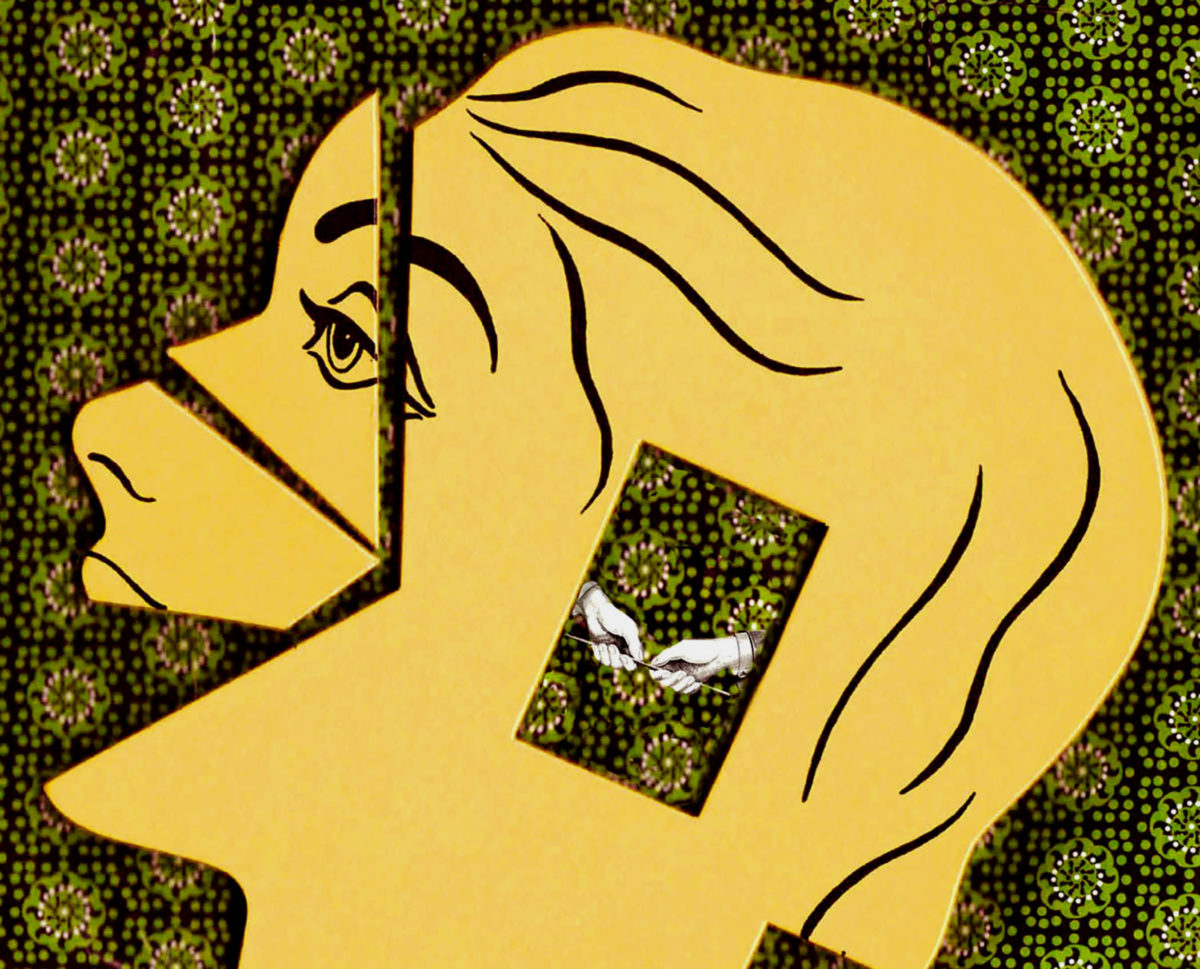
How is teaching going at CalArts? I know they are entirely remote this year.
It was really hard ramping up to it. We learned Zoom in the Spring, then there were all of these other things we had to learn total online registration. By the time school started we were all kind of exhausted to begin with. But I have to say, the students amaze me. I am not just saying that; it is really true! When I have a class I am usually totally exhausted by the end of it, but I am also amazed and inspired by what the people are doing, and how resourceful everyone has to be. They don’t have a studio, they don’t have a lab to go to, they are having to find things around the house or run to the hardware store. I teach a lot of cross-disciplinary classes, so in some classes people are making things and everything has to get shown through this video platform. So a lot of things that maybe would have been live are now in video. It’s really interesting, I have to say, but I look forward to being in person.
Related: Su Friedrich Reflects On 30 Years Of Sink Or Swim by Robert Delany
Speaking of the cross-disciplinary aspect of your work, how does your mindset change when you are working in filmmaking, performance, or puppetry?
I would say my mind doesn’t change. I find what the idea is and then whether that needs to be physicalized in a live theatrical event or if it would be more conducive to film. I do find with films and videos I am freer from explicit narrative. They are more improvisational; much less planning goes into a film. I start it and then it grows. Whereas with theater or performance, and especially making puppet theater, I have to know what I am going to make. I have to make the [puppets]. I have to find people to operate them. I have a [puppetry] piece that I am in progress with, kind of been making it really slowly, where I am working with a former student who is a veteran. [We’re] trying to put this emotional experience into a larger-than-life-sized puppet that takes four people to operate. There is something about the difficulty of that physical operation and the uncanny quality of watching this ‘live-unlive’-being go through things. We can’t work on that right now because of the extremely close proximity. I have been doing more film and a little bit of object making. I have a trailer that is my studio, and from the minute the pandemic started I have been spending as much time in there as I could. It is a space no one else goes in.
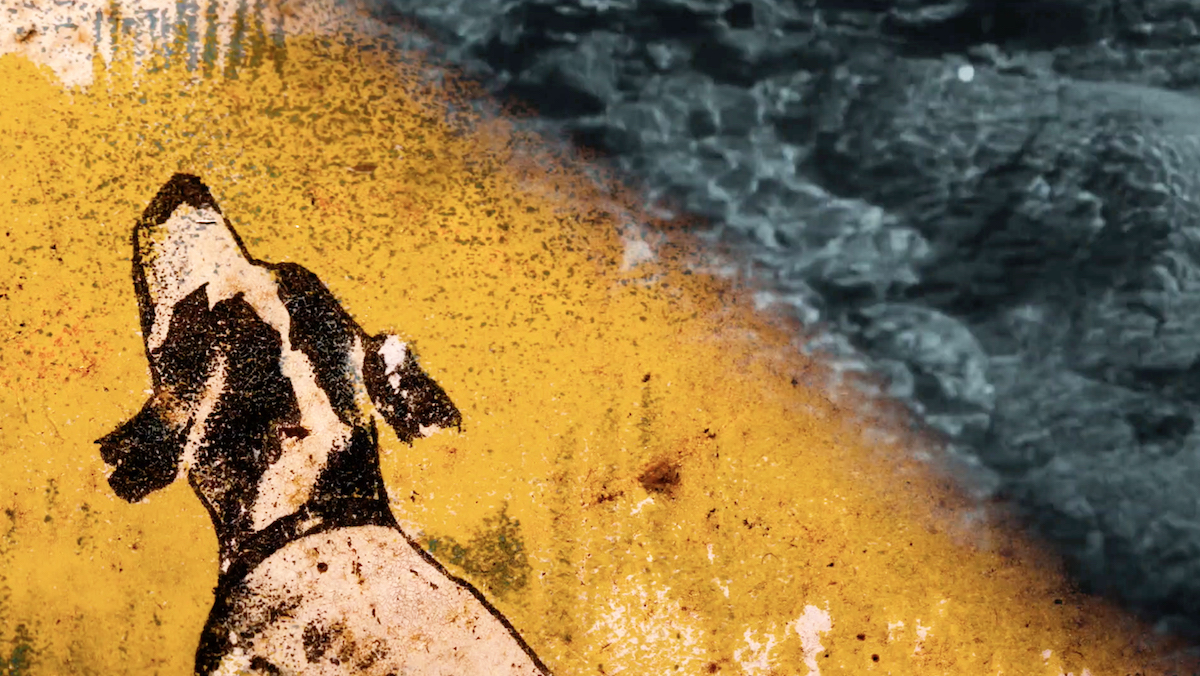
Going back to the Gallery showing as well, could you tell me about the background of the ‘Nervous Series?’ It seems like such a definitive grouping of work in your career.
I can’t remember what is written about this because at first I wouldn’t talk about it. I was actually having a physical nervous system problem that was never really identified or diagnosed and went away, but nine months later. So I could feel the electricity moving down my arm and my legs, not all at the same time. It would sort of move around. Then of course you go to the doctor and you get MRIs, and it takes months for the neurologist to talk to you. So I was having anxiety about the nervous system problem. Everything felt edgy anyways because the United States is so edgy! But it started with this actual physical energy.
At the same time I had been gathering materials for something that had to do with the body and war and childhood. Observances or being part of war — not that I was ever in a war. I grew up with my dad having been in World War II. The language of war was in films, TV; it was all over. Plus the nuclear war that was about to happen. It is bringing all of that anxiety into this one place. I had found a couple of objects and images that came together for that. This is what I mean about more improvisational, more collage-like. I found the figure of the girl who is seated and looking into everything. And then this book that I couldn’t read, it was in Czech, but it had diagrams of fortresses and embankments. I think it was more World War I from the way that they looked. She started looking into these spaces, and finding the whole history of war. That brings me a lot of anxiety. Coupled with what was going on in my body it was just very nervous energy. It started this series that, in a way, was about childhood and war.
Which ends with Arbor, which I wouldn’t say is calm, but it is a different feeling and transitions to the next series. It is in both series, the ‘Double Vision’ and ‘Nervous Series.’ I found these photographs of these people standing on a hillside, the same people in different configurations. To me it felt like, ‘Oh, the war is over.’ That was probably World War II. People are not interacting a lot in these images. They are just standing around looking at the world or talking in small groups. It felt like something was over or they just went to a funeral. Something happened that this is the aftermath of.
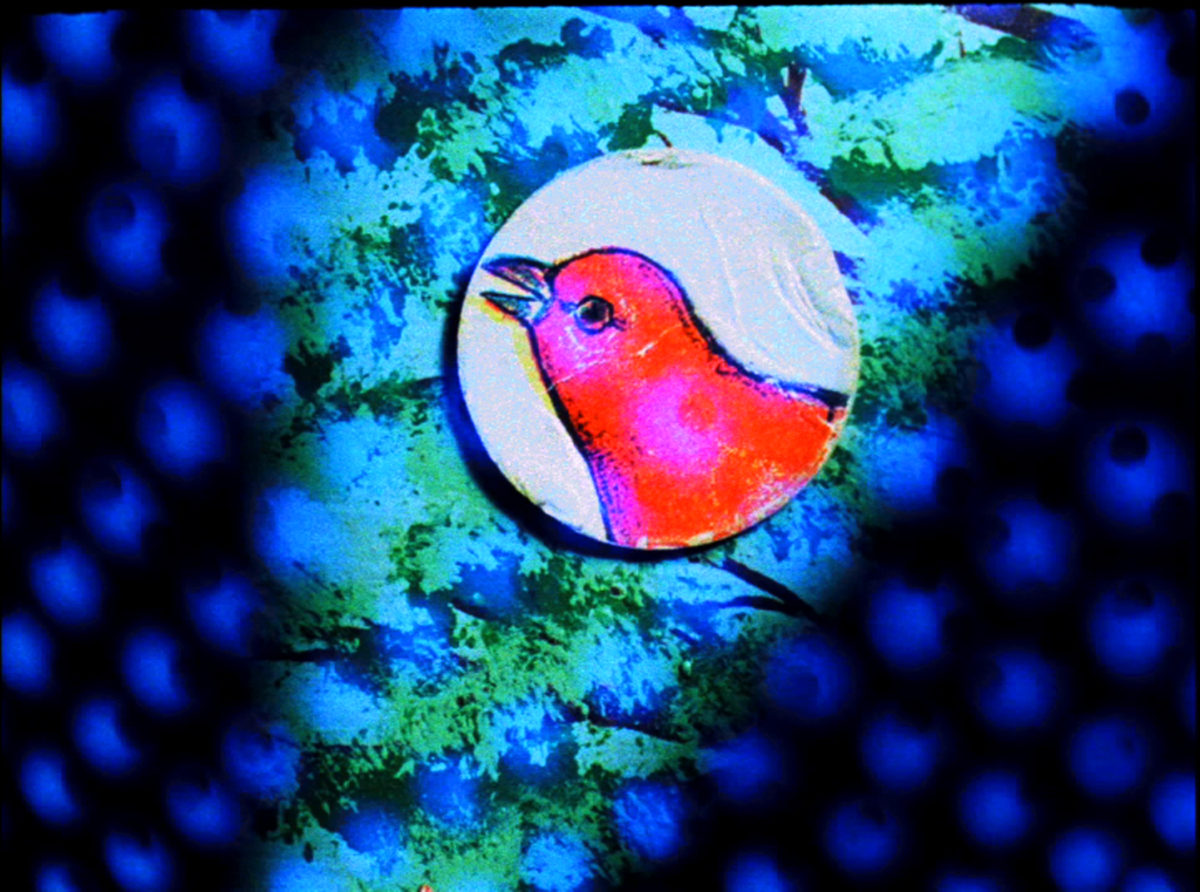
Tied to the energy of your films, I love the sort of elliptical rhythm that a lot of your work has, especially the ‘Nervous Series.’ How do you approach the editing process?
That is really where the films come together. The ‘Nervous Films’ really start with Ghost Algebra (2009), and that was shown on film. Almost all of those films were shot on film. I was looking at rushes so I couldn’t start editing right away. But then I did transfer a bunch of it to digital. That was mostly because the labs kept closing here. It was harder and harder to get work back in a timely way. And just economics at the moment, I didn’t really have any grants for this stuff. So I thought, ‘Oh, I’ll try editing in digital,’ and I really liked it. It gave me a way to start working on sections before the whole thing was done. I would do that somewhat on film, but that is just a lot harder. I just gather enough footage and in a collage manner start thinking about what goes with what. In Ghost Algebra there is a lot of traveling. So she does go somewhere, then goes somewhere else, so that was a way to unify it [with] a sense of what the emotional arc is of the film. Then it just kept getting more and more extreme. Then the blood comes into it. That just sort of happened. I had some red paint around and thought, ‘Let me try to put some red paint in this horse toy’s body!’ and then, ‘Whoa, that’s great!’ So I just started using more red paint. With digital I can do that: I can start editing, see what it is, keep shooting, that day try to edit it, and see if things work.
The system of your arrangement in your work is so strong. How do you feel about collage as a craft?
I think it is really just intuitive. What either clashes with something and forms a new arc, or what continues what is going. There is no real method to my madness! It is fun and I really get lost in the editing process. Then as I get enough I start bringing in sound. That was another really liberating thing for me beginning to work in digital. I love film, don’t get me wrong, but the process allows me to do more along the way. Up until then I had always gathered a lot of sounds and then worked with a sound designer. Sat with them, but they would do their own thing and we would go back and forth. I just found that I could do the sound myself. Now I work with someone who is really brilliant and mixes them and we do a lot of back and forth. She will sometimes suggest something. It just gave me a way to let the sound evolve in the same way as the image. Not always simultaneously, but sometimes I will create a sound section that will help me edit something visually.
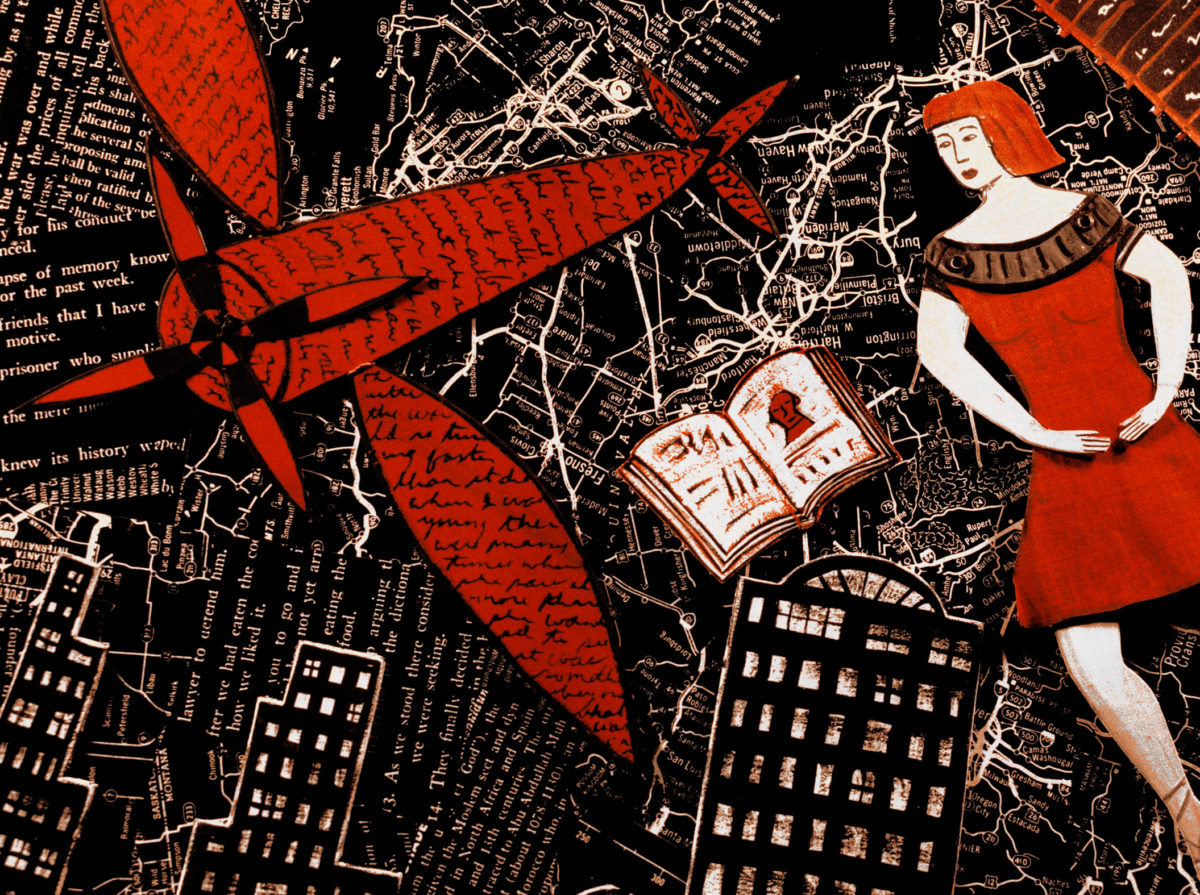
Where did this drive come from for you to use found objects, media, and sound? It is a fascinating part of your work.
I think that comes from the fact that I made puppet theater before I started making films. Now I do them simultaneously. I love objects. I think objects have so much power. You look at an object and it just speaks all of these worlds of meaning that might be different for you than for me looking at the same object. We project on objects. Also just visually, they’re tactile, they are exciting. So I had made The Red Book (1994), which was my first animated film. It was all painted cutouts. I had also done illustration in the past too — that was sort of how I made a living in New York. I did things for the New York Times Book Review, which was perfect for me because it was having an intuitive response to something kind of literary, not trying to sell a product. I was never good at illustration stuff for selling anything. My mind doesn’t work that way. I probably would be richer if it did!
I had developed this black and white painting style in the illustrations that I did. The Red Book comes out of that. I was very happy with that film but I didn’t want to be one of these people whose films all look alike. So the next film that I made, The Secret Story (1996), I did a few handmade figures, but then just started pulling in all of these objects, and pages from books, and all these other kinds of things. Then I saw, ‘Oh, OK, this will be more fruitful for me, more fun.’ It allows each film to have its own terrain and color sense. That is how that started, and I have always been one of those people that has lots of objects, as you can see! [Turns computer camera toward bookshelf.]
As you see from the films, I love maps and globes and diagrams. Those things all come from childhood and things I am attracted to. Here, I’ll grab one thing. This is one of my favorite objects, and I believe I have used it in a film. It’s a slide rule! It was my dad’s. My dad was a chemical engineer and he would always do his sort of homework in the mornings sitting at the breakfast table. He would be using this, and I would think, ‘How is he figuring things out with this thing?’ It was like a magical object. So I love all of those kinds of things, always have.
Tied to these objects, when I was watching Look and Learn (2017) recently I was thinking about how images speak to us. Schematics speak to us in a different way than illustrations, than photographs. Do you think about that when you look at an object or an image?
I don’t know that I analyze it that much. I should say yes, but I think it is really how you follow your attractions! That is more what it is. I just see something and I need to have that, I need to use that. Now I don’t really buy stuff to have them anymore. It’s if something seems useful, even though it might take years for it to be used.
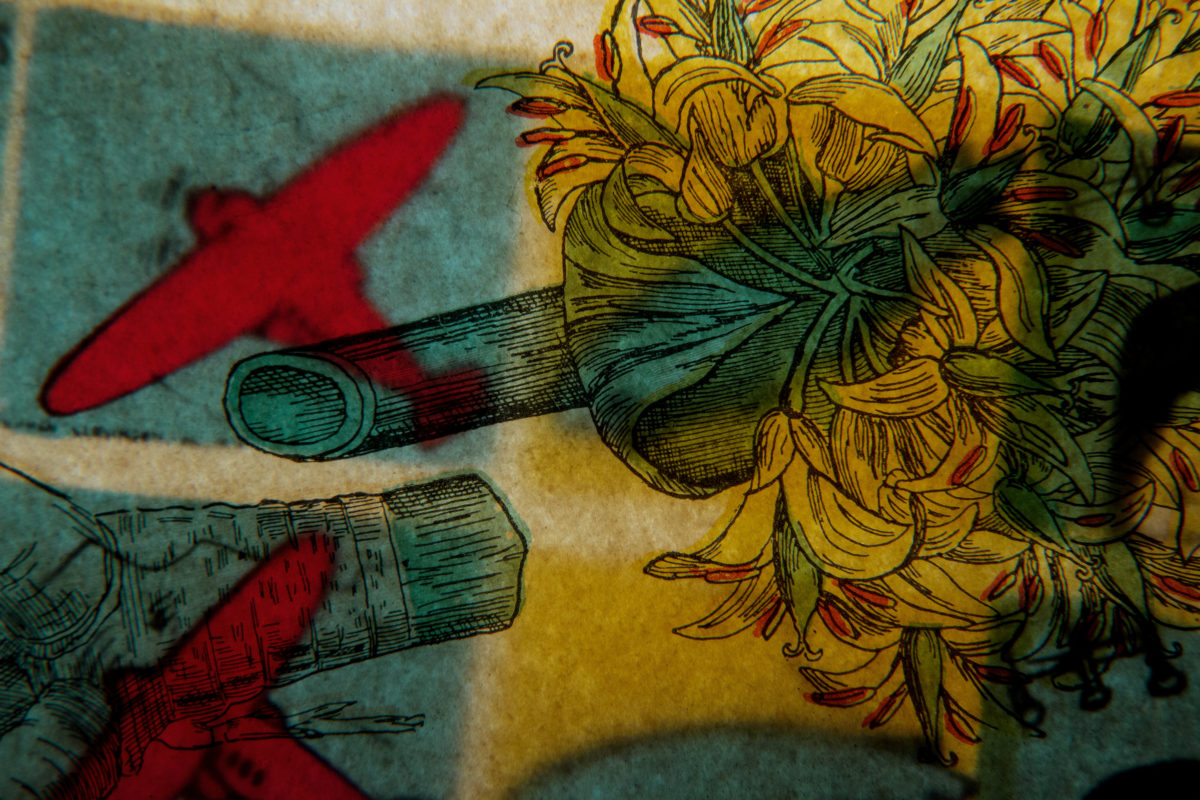
Something that I find interesting about your work is the layering within your films, how we see objects through other objects. I think of Ricky (2011) especially, seeing those illustrations of the crocodile and the frog throughout the film.
It’s a relationship to the performance work. I have done a lot of diorama performances where people walk from stage to stage. I like the idea of peeping in, and of peep holes, limited viewing. I love early films. So that has a lot of that limited viewing and sort of showing you where to look. With all of my early work being on the Bolex, once I learned about rewinding and reshooting I just started making things that allowed for that kind of layering. The surprise. You can sort of plan what is going to be in that black when you rewind and go back, but you can’t control it. It is about ways of seeing and about directing attention to certain things. And about secrets being discovered through those layers.
Ricky was my first digital film. Those are on glass magic lantern slides, those images you described. So when I started I thought that was the core of the film. I started shooting them, and everything was so little and seemed too flat. Then I was trying to figure out how to use these other printed materials that I had and get some texture and layer those together. There is a lot of doubling of images through these lenses. We had an old laptop and my son wanted to smash it. So I said, ‘Yeah, let’s see what it’s made of.’ Then we found out that the screen was made of about seven layers of lenses and films. One was this intact flexible lens. I just tried it and saw what it did, and that was the key to that film to finding texture and space in these flat surfaces with a digital camera, which tends to flatten and has no texture. Then I realized texture is the key to me working in digital.
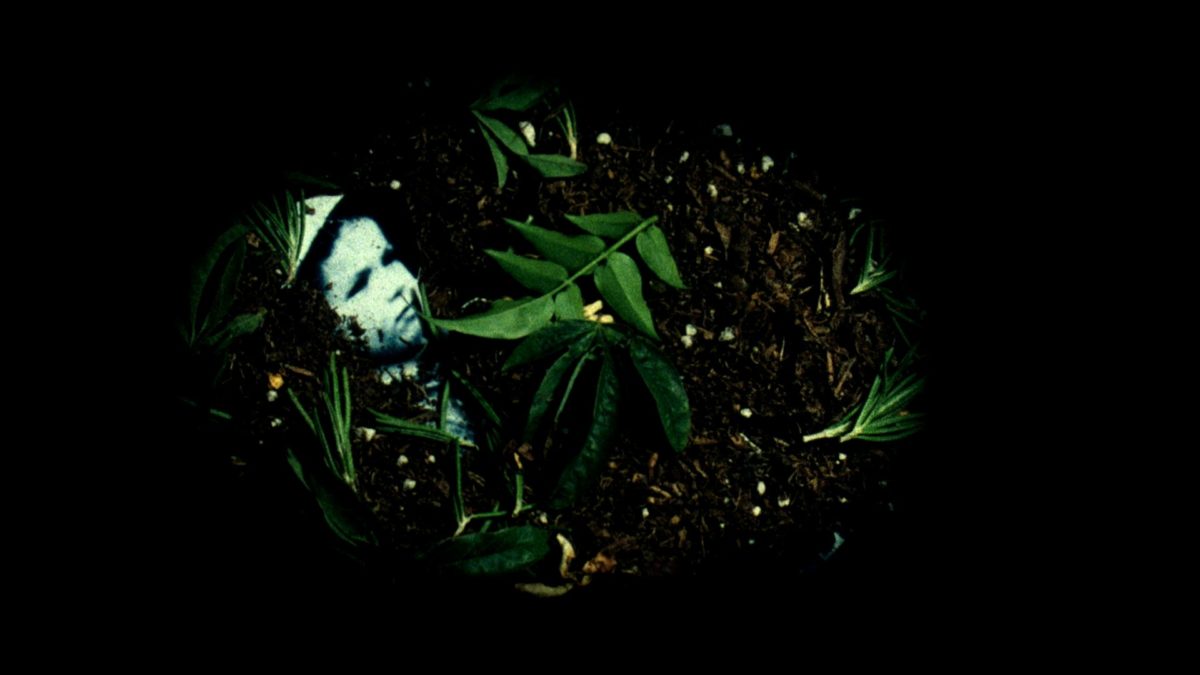
Something I noticed in your work too in regards to visuals is how you play with focus to stretch the limits of an image. Can you talk about using focus as a tool?
That is just something that I discovered when I became a filmmaker. You were talking about different forms, like, ‘What does this form offer?’ And the camera just offers all of these things that people already know about, but that I was discovering.
How important is materiality to you in your work — using lots of different kinds of textures and feels of objects?
It is extremely important. The tactile, but visually tactile too. Things that have texture to the eye but they do not have a lot of texture to the feel. I don’t know what that is except for a sense of realness in these inanimate objects. They are being asked to do all of these things and their materiality lends it a kind of reality within the fiction.
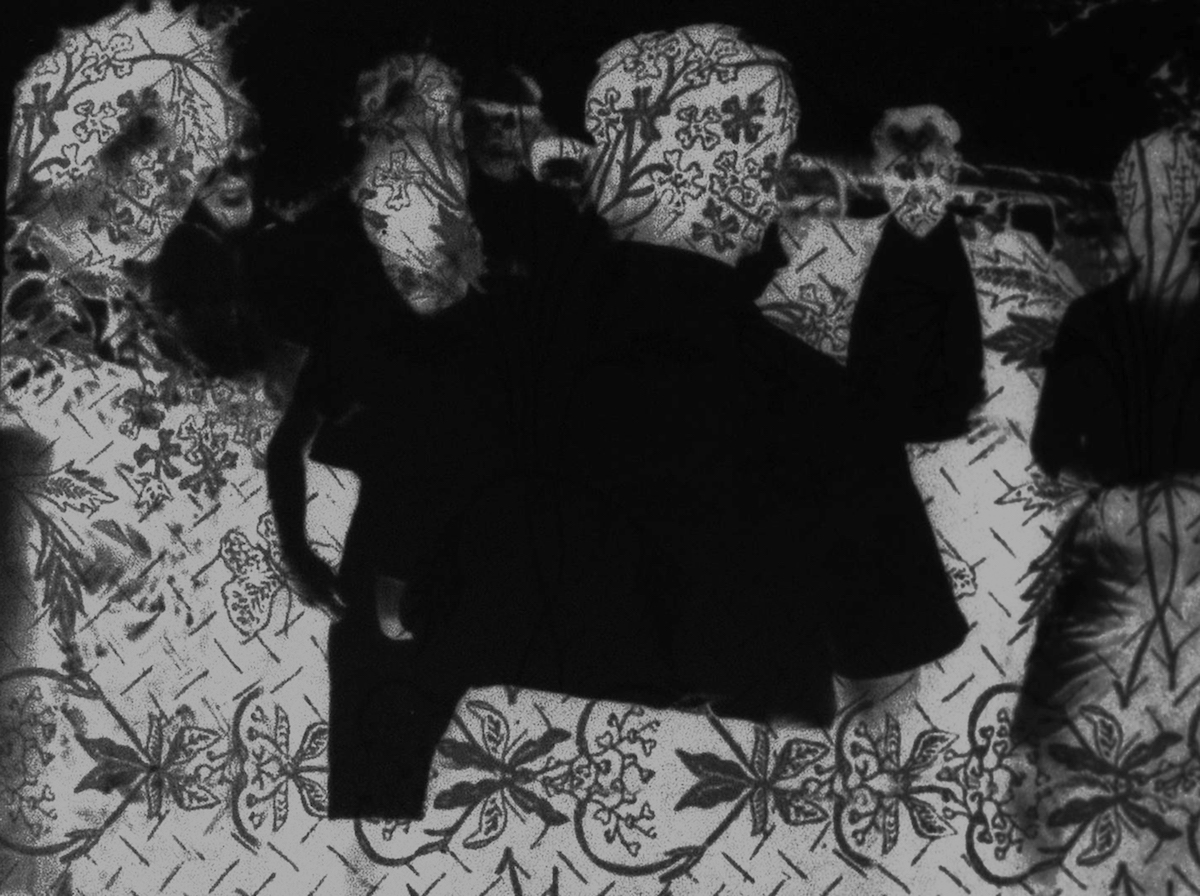
You mentioned earlier that memories of war were an influence upon the ‘Nervous Series.’ I am particularly interested in how this relates to Arbor (2012), where the people in the photographs begin disappearing from images. How does memory factor into your work?
Some of it is my own memory, but a lot of it is the idea of memory or cultural memory, which is of course different for each person. With Arbor specifically, here are these [photos of] people who were together and I found them in a little envelope in a thrift store. So whose memory just got lost? Just got given away? But if you find them in a thrift store it means they couldn’t throw them away. You are kind of inheriting a memory. At first my biggest forensic task was trying to figure out who are these people, and what are they doing? I did find on the back of one of the photographs that they were processed in Berlin. Whether they were in Berlin or that is just where the lab was, I don’t know. That really added to this sort of post war early-’50s feeling. I was trying to, in a way, unearth their memory, but then I just fictionalize it. I make my own version of it. Thinking about those found photographs and their lostness in the thrift store, my rescuing them in a sense, photographs are a document, but those people are not on that hillside now. I just see them on that hillside. So I started taking them out of the hillside. Returning the landscape to what it was. It was a meditation on photography and memory. Of course that hillside is probably a bunch of apartment buildings right now, but there was something about how the landscape lasts sort of longer but maybe holds their memory.
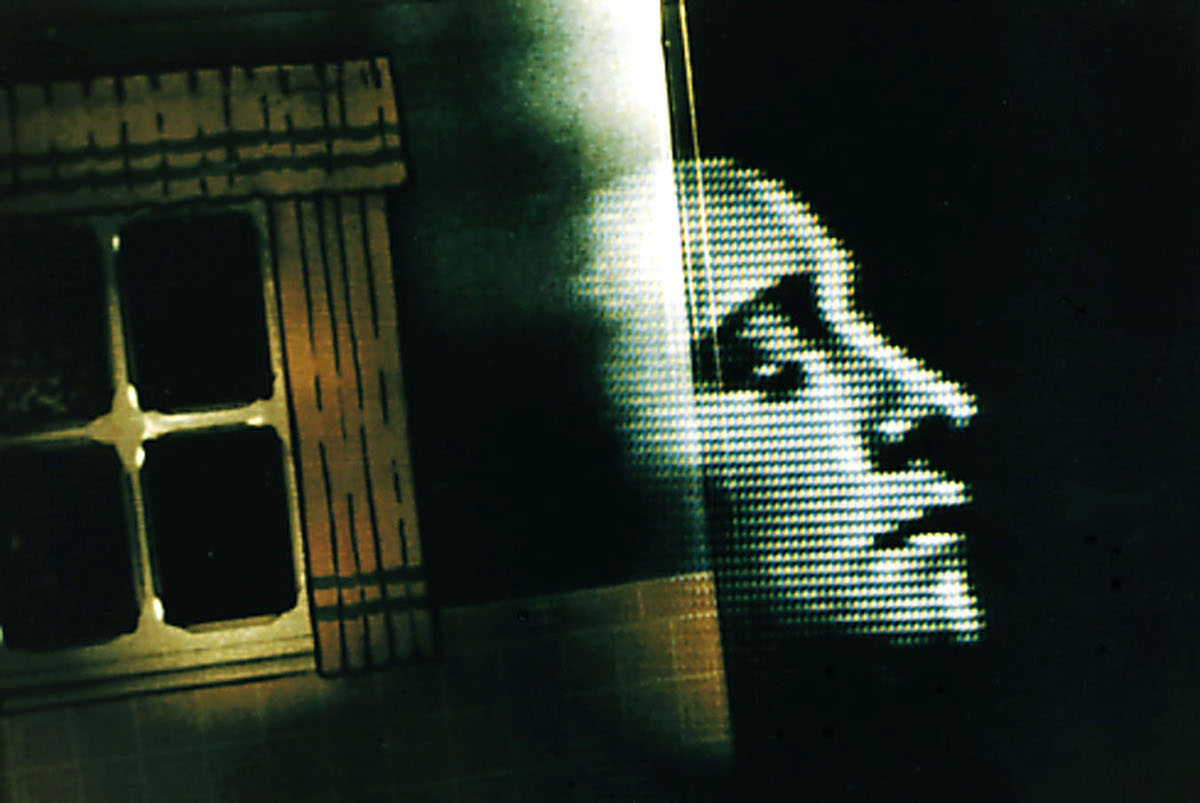
In some of your films, you create a feeling of time being suspended, particularly with something like The Fourth Watch (2000). How do you approach creating the temporal space in your films?
I do think about it with the films. I think it is particular from film to film. Some I am really deliberately obfuscating linear time. I would say in Arbor it is a little more linear what happens — there is a linear progression. Even in Ricky there is a linear progression. But The Fourth Watch, the title is about how the Greeks had the fourth watch before the dawn. It was about this feeling of what happens before the dawn.
I am just finishing [a film] that has a very weird looping sense of time. It is very different in that I had been wanting to do this for a while, and it took me a while to find the right software. There is this software people can use to design their own house. So I wanted to build a house, or try to, through that software, and screen record it. I made these QuickTimes of me trying to manipulate this, then I used that as a layer. Then I shot a lot of negatives and different things to put people into this environment. It is just kind of swirling and people are coming in and out. I started it before the pandemic, but I finished it in the pandemic. People are trapped outside of houses and they don’t look too distressed. So it is also about this continuity of humans. That has got a time space that sort of starts and stops. Then who knows where it is going before and after.
Is that the same software you used in 22 Light Years (2020)?
Well, that’s the one!
I loved the way you laid the house out, and how the images sort of divided from the outline of the house. Those moments are incredible.
Oh, thanks! That was me discovering how what I could do in Premiere was similar to what I could do with the Bolex. It was just a different layering command. Everything could just appear there.
The different angles that you show are really interesting. How did you come across that software originally?
I just think I have seen people doing things like this. I don’t even know where but I even asked a friend of mine who is an interior designer, and she said, ‘Oh, we don’t use that stuff.’ Then I started going online and really looking for one that would be easy enough for me to use so that I didn’t have to go learn a whole new language. I love Phil Solomon and Mike LaPore’s things that they made with Grand Theft Auto. They play the game with the glitches to make things happen. They edit together these very poetic and beautiful films. I have been fascinated by that kind of environment. My son plays video games — he is playing one now that has got incredible landscapes and fields with things blowing. We are going to go in and he is going to record some for me to use for something else. I don’t know what it will be. But it is more landscape than interior.
You once described your process of filming as ‘handmade alchemy.’ Can you explain that thought a bit more?
It must have been right after I saw this alchemy show at the Getty, which was so amazing. This idea of wanting to make gold, that was at the core of alchemy. It is just visual gold; you are mining for gold. You are letting two chemicals come together and seeing what explosion happens. Again it goes back to collage and montage but also having a lot of things around me that I can choose from. Like a laboratory and seeing what happens with those.
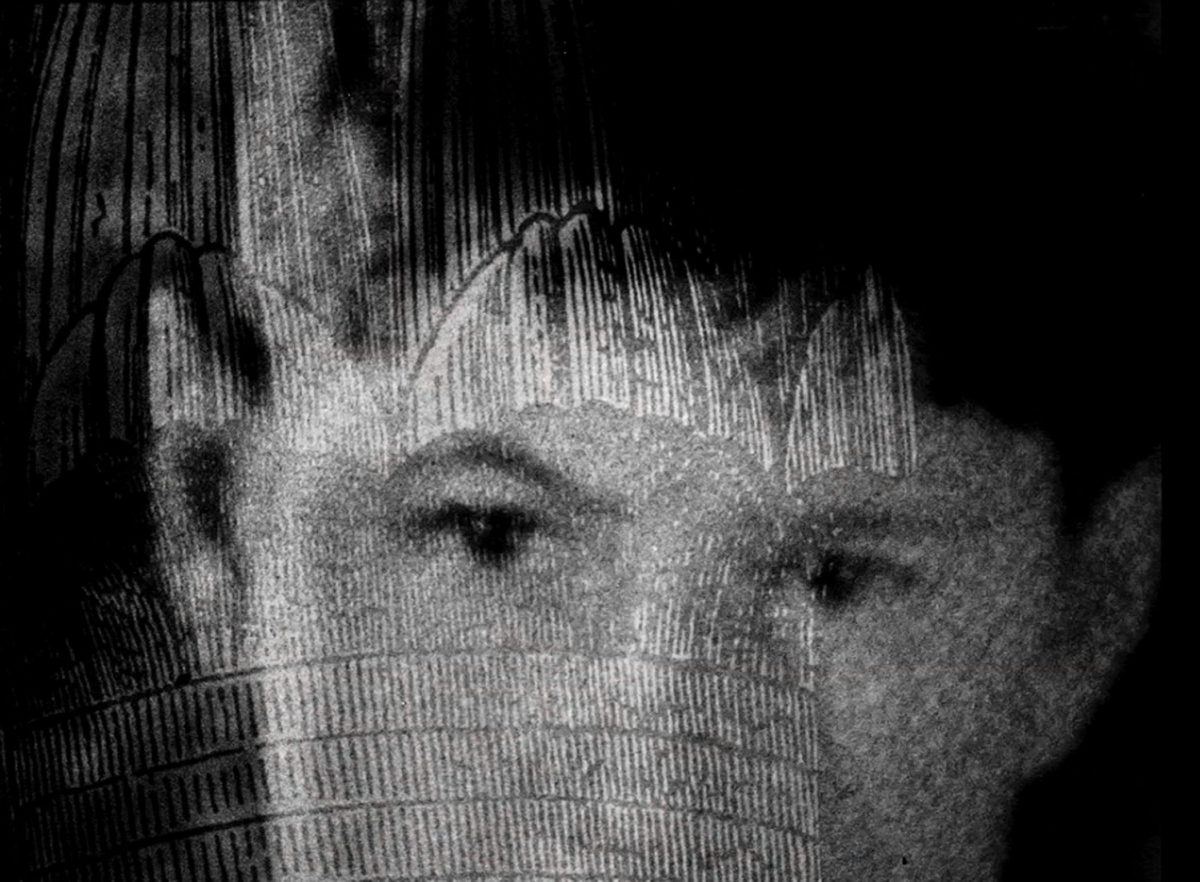
I was rewatching Kindless Villain (2010) today, and personally I love that film so much, I was just wondering what the experience was like making that film?
I am really glad you like that one because it’s one I like a lot. It is sort of a small film that got played at that time, but really doesn’t get asked for much anymore. I don’t think it is because it is a bad film, but it is a quiet film.
We talked about found film — I found that film walking down First Street in New York City. There were a bunch of cans of film just lying on the sidewalk. So I just scooped them up and tucked them in my bag, and when I got home to L.A. I started looking at them. It was this film about Fort Marion in Florida, which is in St. Augustine. It was a sort of educational film, describing, I think, the Spanish American War, one of those early wars and how the soldiers were starving. That they were so hungry they chewed the leather on their belts. This voiceover is going on and you are traveling around Fort Marion, but there are two boys that you are following. They are enacting what the soldiers went through. They are falling, they are eating their belts, they are looking tired, and they are looking out at the sea. It was just amazing to me. It is 2010, so my son was 11. Of course we played lots of battles and war games with action figures. It was just making me think literally how we reenact the bigger world. It is not a profound idea; it is an idea that culture has. It was just having a son and being in the middle of that and this film where these two boys were reenacting this. That was sort of the structure.
Then seeing them moving through all of those spaces also reminded me of this dream I had once where I was inside a pyramid, trying to get out. Then when I got out I was high in the pyramid. I wanted to add this sort of Egyptian maze imagery to it. I collect old recordings too. I found John Barrymore doing Hamlet. I had just been listening to it and going, ‘Oh my god, this is so perfect for this film’ because it is kind of like a murder. All this anticipated violence. So the title of Kindless Villain is a line in Hamlet. You can barely understand him saying it because it is an old recording. I thought, ‘Whoa, that is such a good title.’
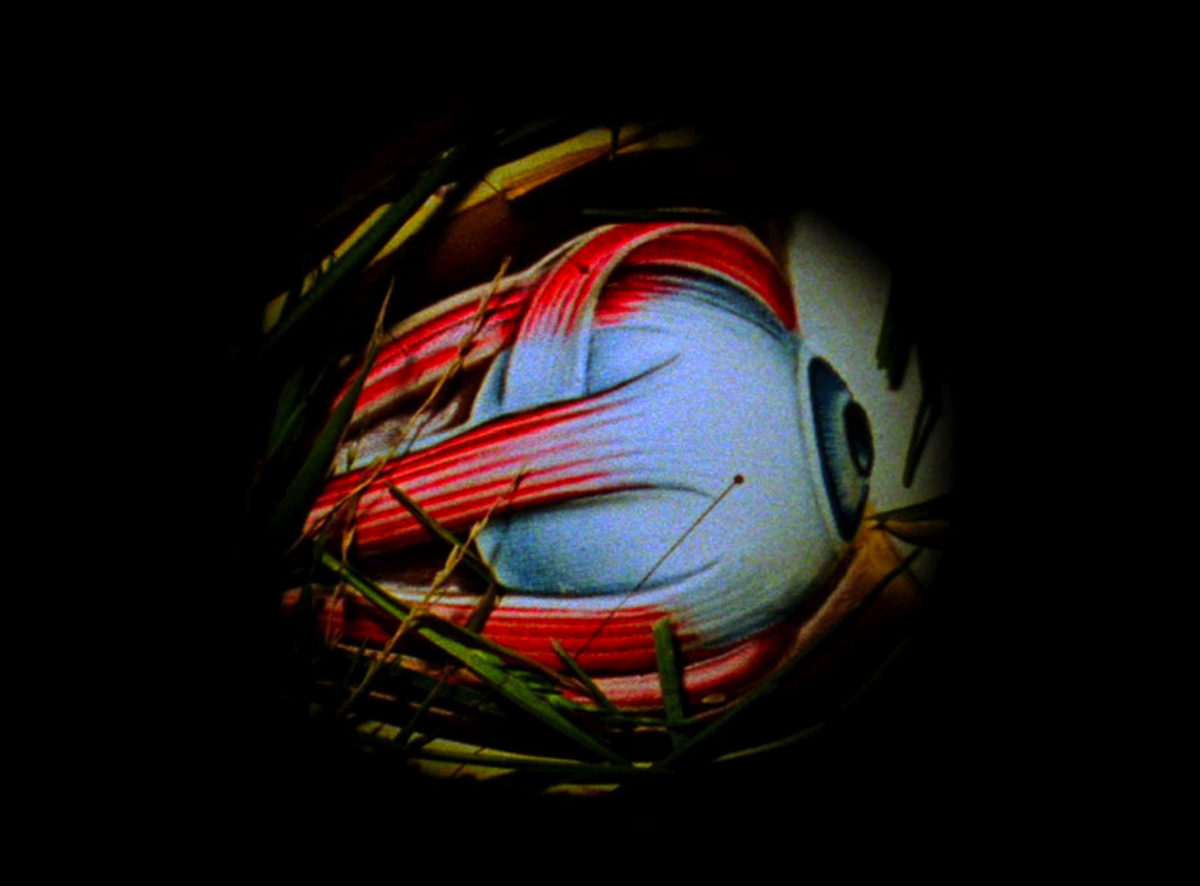
How do you feel like your filmmaking has changed over the years?
When I first started I definitely would make a kind of storyboard. Not sequential but just keeping track of images. But The Red Book actually started as a book from some dreams that I had. I started drawing them in this book. These were called The Red Books. I had made some little films that were part of a performance, and then I made a kind of puppet film that was a part of a performance called Babel Town. It is more in the transition. Then I thought, ‘I don’t want to do a puppet film, it’s too cumbersome, it’s not intuitive. I have to plan too much. I want to make an animated film.’ I had already made these Red Books and made some paintings from them. I thought they would be a great source for a film. There were key images that I had created, but then I learned that things happen when you are in the middle of the process. I would get other ideas. So I had more of a ground plan for some of them, and now I have no ground plan at all. Now I might make some notes when I am editing, ‘Oh, this shot needs more red,’ or something. It is much more direct and intuitive and engaging with it in the moment. I enjoy it a lot. I enjoyed it before, but I enjoy it even more now.
Visit Janie Geiser’s Vimeo page to view a selection of her films
More of her work is available to stream on Fandor through Amazon Prime
Stay up to date with all things Split Tooth Media and follow Robert on Twitter
(Split Tooth may earn a commission from purchases made through affiliate links on our site.)

